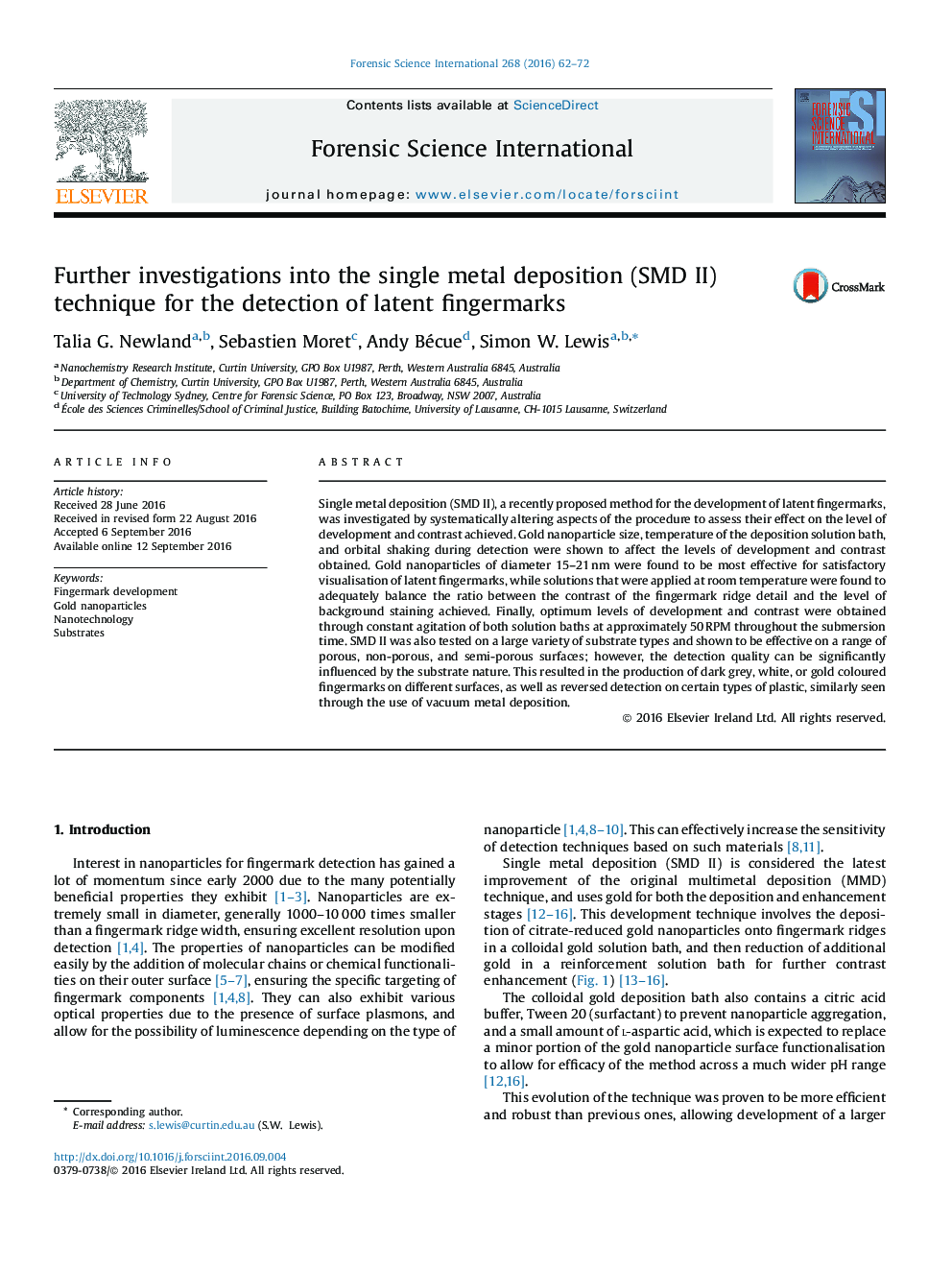| کد مقاله | کد نشریه | سال انتشار | مقاله انگلیسی | نسخه تمام متن |
|---|---|---|---|---|
| 4760377 | 1421982 | 2016 | 11 صفحه PDF | دانلود رایگان |

- Various factors investigated for effect on latent fingermark development by SMD II.
- Gold nanoparticles (15-21Â nm) applied at room temperature found to be most effective.
- Best contrast obtained through constant agitation of reagent baths.
- SMD II effective on a range of porous, non-porous, and semi-porous surfaces.
Single metal deposition (SMD II), a recently proposed method for the development of latent fingermarks, was investigated by systematically altering aspects of the procedure to assess their effect on the level of development and contrast achieved. Gold nanoparticle size, temperature of the deposition solution bath, and orbital shaking during detection were shown to affect the levels of development and contrast obtained. Gold nanoparticles of diameter 15-21Â nm were found to be most effective for satisfactory visualisation of latent fingermarks, while solutions that were applied at room temperature were found to adequately balance the ratio between the contrast of the fingermark ridge detail and the level of background staining achieved. Finally, optimum levels of development and contrast were obtained through constant agitation of both solution baths at approximately 50Â RPM throughout the submersion time. SMD II was also tested on a large variety of substrate types and shown to be effective on a range of porous, non-porous, and semi-porous surfaces; however, the detection quality can be significantly influenced by the substrate nature. This resulted in the production of dark grey, white, or gold coloured fingermarks on different surfaces, as well as reversed detection on certain types of plastic, similarly seen through the use of vacuum metal deposition.
262
Journal: Forensic Science International - Volume 268, November 2016, Pages 62-72